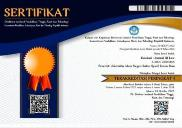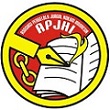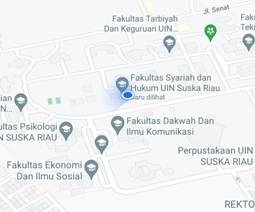- Focus and Scope
- Section Policies
- Peer Review Process
- Open Access Policy
- Archiving
- PUBLICATION ETHICS
- AUTHOR GUIDELINES
- PUBLICATION FEE
- SCANNING PLAGIARISM
- COPYRIGHTS NOTICE
- INDEXING
Focus and Scope
Eksekusi : Journal Of Law, E-ISSN: 2686-5866, P-ISSN: 2714-5271 Published since 2019 by Department of Law, Faculty of Syari'ah and Law, Sultan Syarif Kasim State Islamic University Riau originally titled Eksekusi: Journal Of Law . Eksekusi: Journal Of Law focused on various subdiscipline of the legal science.
- Basic principle of jurisprudence
- Private law
- Criminal law
- Procedural law
- Economic and business law
- Constiutional law
- Administrative law
- International law
- Law and society
In addition to these fields, Eksekusi : Journal Of Law also accepts texts covering topics between law and other scientific fields sociology, legal anthropology, law and economics, and others.
Published 2 (two) times a year in June, and December. Each issue contains 12 articles, both conceptual articles and research articles. Eksekusi: Journal Of Law is published in Indonesian, but an English text is also accepted.
Section Policies
Articles
Peer Review Process
The submitted manuscript is first reviewed by an editor. It will be evaluated in the office, whether it is suitable for Eksekusi: Journal Of Law focus and scope or has a major methodological flaw and similiarity score by using Turnitin. The manuscript will be sent to at least two anonymous reviewers (Double Blind Review). Reviewers' comments are then sent to the corresponding author for necessary actions and responses.
The suggested decision will be evaluated in an editorial board meeting. Afterwards, the editor will send the final decision to the corresponding author. Utilizing feedback from the peer review process, the Editor will make a final publication decision. The review process will take approximately 4 to 12 weeks. Decisions categories include:
Reject - Rejected manuscripts will not be published and authors will not have the opportunity to resubmit a revised version of the manuscript to Eksekusi: Journal Of Law . Resubmit for Review– The submission needs to be re-worked, but with significant changes, may be accepted. However, It will require a second round of review.
Accept wtih Revisions - Manuscripts receiving an accept-pending-revisions decision will be published in Eksekusi: Journal Of Law under the condition that minor/major modifications are made. Revisions will be reviewed by an editor to ensure necessary updates are made prior to publication.
Accept - Accepted manuscripts will be published in the current form with no further modifications required.
Open Access Policy
This journal provides immediate open access to its content on the principle that making research freely available to the public supports a greater global exchange of knowledge.
Archiving
This journal utilizes the LOCKSS system to create a distributed archiving system among participating libraries and permits those libraries to create permanent archives of the journal for purposes of preservation and restoration. More...
PUBLICATION ETHICS
Publication Ethics
In order to keep the highest quality of the publication, Eksekusi: Journal Of Law requires that all papers are subject to double blind peer review process based on an initial screening by the editor The following duties outlined for editors, authors and reviewers are developed by following COPE Code of Conduct for Journal Editors and Elsevier Guidelines for Publication Ethics and Malpractice Statement.
|
AUTHOR GUIDELINES
A. JUDUL
Judul merupakan topik artikel yang menggambarkan penelitian dengan judul [Ditulis kapital, Bold, Font Book Antiqua 14 pt, Center, Maksimal 15 Kata]
B. ABSTRAK
Ditulis dengan menggunakan huruf Arial 12 pt dengan satu spasi antar baris. Left indent 2.5 cm dan right indent 0 cm dan panjang maksimum terdiri dari 200 kata. Abstrak harus memuat tujuan utama, metodologi, teknik pengumpulan dan analisis data, temuan utama dan simpulan. Abstrak ditulis dalam Bahasa Inggris dan Bahasa Indonesia.
ABSTRACT [Book Antiqua, 10 pt, Italic, Bold]
Abstract are written in English and Indonesian. The abstract contains a brief explanation of the urgency of the research, problems, research methods, research results and conclusions.
Abstract written using Book Antiqua font, 10 pt, 1 space, consisting of 150-250 words.
ABSTRAK [Book Antiqua, 10 pt, Bold]
Abstrak ditulis dalam bahasa Inggris dan bahasa Indonesia. Abstrak berisi pemaparan secara ringkas mengenai urgensi penelitian, permasalahan, metode penelitian, hasil penelitian, dan kesimpulan.
Abstrak ditulis menggunakan font Book Antiqua, 10 pt, 1 spasi, terdiri dari 150-250 kata
Kata Kunci: terdiri dari 3-5 kata kunci, Book Antiqua, 10 pt.
C. KATA KUNCI
Ditulis dengan menggunakan huruf Book Antiqua, 10 pt, ditulis dengan huruf kecil; antara 3 - 5 kata kunci. Kata kunci harus mereflesikan topik, subtopik, tema, desain penelitian dan konteks penelitian.
D. PENDAHULUAN [Book Antiqua, 12 pt, Bold]
Pendahuluan berisi pemaparan urgensi permasalahan yang diteliti dan kajian pustaka tentang telaah dari berbagai referensi yang bersumber dari buku ilmiah, jurnal ilmiah dan lainnya yang erat hubungannya dengan penelitian, dengan ketentuan : (1) Pemaparan topik utama penelitian dengan menyajikan hasil studi pendahuluan sehingga terlihat jelas urgensi penelitian yang dilakukan; (2) Memuat literatur terbaru (maksimal 10 tahun terakhir) atau mensitasi literatur penelitian terbaru terkait dengan artikel yang dikaji sehingga novelty penelitian tergambar jelas; (3) Harus menunjukkan kesenjangan (gap analysis) yang belum terisi oleh penelitian/literatur, ketidakkonsistenan dan kontroversi yang muncul diantara literatur yang ada atau antara literature dengan keadaan nyata di lapangan; (4) Memuat permasalahan, tujuan kajian, kontek kajian, dan unit analisis yang digunakan, dan Kelima, menampilkan apa yang dibahas dalam struktur artikel.“Jika menggunakan quotasi (mengutip secara langsung), maka ditulis dalam tulisan miring (italic) seperti ini”. Ditulis dengan font Book Antiqua, 12 pt, spasi 1.15, dan rata kanan kiri.
F. METODOLOGI [Book Antiqua, 12 pt, Bold]
Metode penelitian berisi pemaparan jenis penelitian yang digunakan, metode pendekatan, sumber data, subjek dan objek penelitian, lokasi penelitian (jika penelitian empiris), teknik pengumpulan data dan teknik analisa data. Ditulis dengan font Book Antiqua, 12 pt, spasi 1.15, dan rata kanan kiri
G. HASIL DAN PEMBAHASAN [Book Antiqua, 12 pt, Bold]
Hasil dan pembahasan berisi pemaparan analisis dan temuan/hasil penelitian, dengan ketentuan utama dalam menuliskan temuan penelitian, sebagai berikut: (1) Sajikan temuan secara singkat, dengan tetap memberikan detail yang cukup untuk mendukung kesimpulan. (2) Boleh menggunakan tabel, grafik atau gambar, tetapi tidak melakukan pengulangan informasi yang sama. (3) Setiap temuan harus diinterpretasikan dengan baik. Ditulis dengan font Book Antiqua, 12 pt, spasi 1.15, dan rata kanan kiri
H. PENUTUP
Penutup berisi kesimpulan atas jawaban dari permasalahan yang diteliti. Paparkan kesimpulan secara jelas dan ringkas. Ditulis dengan font Book Antiqua, 12 pt, spasi 1.15, dan rata kanan kiri
I. DAFTAR PUSTAKA [Book Antiqua, 12 pt, Bold]
Daftar pustaka merupakan daftar yang berisi semua buku atau tulisan yang menjadi rujukan dalam melakukan penelitian. Bisa dikutip dari buku, artikel jurnal, undang-undang, dan referensi lainnya.
Penulisan daftar pustaka menggunakan aplikasi Mendeley dengan format Chicago Manual of Style 17th Edition (full note) ditulis dengan font Book Antiqua, 12 pt, spasi 1.
Contoh Daftar Pustaka
Darwis, Muhammad. 2023. Hukum Antar Tata Hukum. Pekanbaru: Suska Press`
Kastulani, Muhammad dan M. Alpi Syahrin.2020. Hukum Perdata. Jakarta: Rajawali Press.
Sosiawan, Ulang Mangun. “Perspektif Restorative Justice Sebagai Wujud Perlindungan Anak Yang Berhadapan Dengan Hukum (Perspective of Restorative Justice as a Children Protection Against The Law).” Jurnal Penelitian Hukum De Jure 16, no. 4 (2017): 425. https:// doi.org/10.30641/dejure.2016.v16.425-438.
Contoh Tabel
Tabel 1. Judul
No | Nama/Judul | Kolom A | Kolom B |
|
|
|
|
|
|
|
|
|
|
|
|
Sumber:……….
Contoh Grafik
Grafik 1: Judul
Sumber Grafik:
Contoh Gambar:
Gambar 1. Judul
Sumber Gambar:
AUTHOR GUIDELINES
KETENTUAN UMUM PENULISAN
- Artikel jurnal dapat ditulis menggunakan bahasa Inggris atau bahasa Indonesia.
- Artikel Jurnal ditulis dengan format 1 kolom, Font yang digunakan Book Antiqua 1.15 spasi, font 12 pt.
- Penulisan kutipan dengan menggunakan model Footnote dan aplikasi Mendeley.
- Bilamana merujuk suatu pasal, huruf awal kata “Pasal” ditulis dengan huruf kapital.
- Bilamana merujuk suatu ayat, huruf awal kata “ayat” ditulis dengan huruf kecil dan angka ayat dalam tanda kurung. Contoh: ayat (2)
- Jumlah Halaman Artikel minimal 12 halaman, dan maksimal 20 halaman. Jumlah halaman sudah termasuk gambar, table, dan daftar pustaka.
- Sebaiknya Penulis menghindari metode penjabaran secara enumeratif.
KETENTUAN PENULISAN KUTIPAN DAN SUMBERNYA:
- Kutipan langsung:
- Kutipan tidak melebihi 4 baris : [ Book Antiqua 12, 1.5 spasi, penulisan mengikuti teks, diawali dan diakhiri dengan tanda (“..”).
- Kutipan melebihi 4 baris: [ Book Antiqua 12, 1 spasi, penulisan kutipan dimulai setelah 6 ketukan dari batas tepi kiri.
- Kutipan tidak langsung [ Book Antiqua 12, 1,5 spasi, penulisan kutipan mengikuti teks].
KETENTUAN PENULISAN CATATAN KAKI
- Jenis Huruf Book Antiqua, 10pt, 1 spasi, Footnote, Model Chicago Manual Of Style 17th Edition (Full Note)
- Baris pertama dalam footnote agak menjorok sekitar 5 ketukan kedalam kalimat.
Contoh:
1 Saldi Isra. Pergeseran Fungsi Legislasi. Edisi Kedua. Depok: PT RajaGrafindo Persada, 2018. hlm. 54.
2 Riyadi dan Deddy Supriyadi Brata Kusumah, Perencanaan Pembangunan Daerah: Strategi Menggali Potensi Dalam Mewujudkan Otonomi Daerah. Cetakan 2. Jakarta: Gramedia Pustaka Utama, 2004. hlm. 345.
Muliati dan Bulan Dawiya, “Usaha Penangkaran Sarang Burung Walet”, Jurnal Mirai Manajemen. 7 .1. 2022, hlm. 184.
KETENTUAN PENULISAN DAFTAR PUSTAKA
- (Penulisan daftar pustaka menggunakan gaya Model Chicago Manual Of Style 17th Edition (Full Note), Book Antiqua, 12 pt, 1 Spasi.
- Penulisan daftar pustaka dikelompokkan sesuai dengan jenis referensi, (Buku, Jurnal/Prossiding, Tesis atau Disertasi, Sumber Online .
- Sumber Dari Buku
- Penulis 1 orang dalam buku
Contoh:
Rahardjo, Satjipto., 2009. Ilmu Hukum. Bandung: Citra Aditya Bakti.
- Penulis terdiri dari 2 orang atau lebih dalam buku
Contoh:
Martosoewignjo, Sri Soemantri, Manan Bagir dan Hadjon, Philipus M. 2010. Pengantar Hukum Administrasi Indonesia. Yogyakarta: Gadjah Mada University Press`
- Penulis dari kelompok atau lembaga tertentu
Contoh:
Bank Indonesia. 2016. Optimizing Macroprudential Policy to Support the Financial Stability. Jakarta: Bank Indonesia.
- Artikel dalam Jurnal
- Penulis 1 Orang
Contoh:
Sosiawan. “Perspektif Restorative Justice Sebagai Wujud Perlindungan Anak Yang Berhadapan Dengan Hukum (Perspective of Restorative Justice as a Children Protection Against The Law).” Jurnal Penelitian Hukum De Jure 16, no. 4 (2017): 425. https:// doi.org/10.30641/dejure.2016.v16.425-438.
- Penulis terdiri dari 2 Orang atau lebih
Contoh:
Sosiawan, Ulang Mangun. “Perspektif Restorative Justice Sebagai Wujud Perlindungan Anak Yang Berhadapan Dengan Hukum (Perspective of Restorative Justice as a Children Protection Against The Law).” Jurnal Penelitian Hukum De Jure 16, no. 4 (2017): 425. https:// doi.org/10.30641/dejure.2016.v16.425-438.
- Artikel dalam Prosiding
Contoh:
Hidayat, A. Negara Hukum Pancasila (Suatu Model Ideal Penyelenggaraan Negara Hukum). In Prosiding Konggres Pancasila IV: “Strategi Pelembagaan Nilai-Nilai Pancasila dalam Menegakkan Konstitusionalitas Indonesia”. Yogyakarta: PSP Press Universitas Gadjah Mada. 2012. 56-65
- Artikel dalam Surat kabar (newspaper)
Contoh:
Sukirno. Diskriminasi Masyarakat Adat. Harian Kompas. (2014, Januari 16).
Surbakti, R. Sistem Pemilu dan Konsekuensi. Harian Kompas. (2016, September 22).
- Tesis atau Disertasi
Contoh:
Hidayat, Arif. Kebebasan Berserikat di Indonesia: Suatu Analisis Pengaruh Perubahan Sistem Politik Terhadap Penafsiran Hukum. Universitas Diponegoro. 2016
Roisah, Kasih. Membangun Prinsip-Prinsip Perlindungan Hukum Kekayaan Intelektual Berbasis Kearifan Lokal (Studi Perlindungan Hukum terhadap Ekspresi Budaya Tradisional Indonesia. Universitas Diponegoro. 2013
- Artikel dari Sumber online
Contoh:
Nurjaya, I. N. (2008). Kearifan Lokal dan Pengelolaan Sumber Daya Alam. Dikutip dari http://blogmanifest.wordpress.com/2008.
- Wawancara
Contoh:
Hawari, D. Kepala Sub Bidang Kekayaan Intelektual Kantor Wilayah Kementerian Hukum dan HAM Prov. Riau, Pekanbaru: 27 Desember 2019.
KETENTUAN PEMBUATAN TABEL DAN GAMBAR
- Setiap tabel dan gambar yang masuk dalam artikel, diberi nomor dengan angka romawi dan diakhiri tanda titik.
- Judul tabel diletakkan di atas tabel, sumber Data Diletakkan dibawah table. Selain itu, judul gambar di sebelah bawah gambar tersebut.
- Pembuatan Tabel mengandung garis-garis vertical dan horizontal.
- Tabel jangan terpotong pada halaman yang berbeda, kecuali jika besarnya melebihi satu halaman. Jika harus terpotong, jangan lupa tulis ulang header row untuk setiap kolomnya, diberi nomor urut tabel yang sama, dan judul diganti dengan Lanjutan
- Tabel dibuat rata kiri, Jenis Huruf Book Antiqua, 12 pt, Spasi 1 (Pada bagian Judul Kolom Ditulis dengan Format Italic).
Contoh Tabel
Tabel 1. Judul
No | Nama/Judul | Kolom A | Kolom B |
|
|
|
|
|
|
|
|
|
|
|
|
Sumber:……….
Contoh Grafik
Grafik 1: Judul
Sumber Grafik:
Contoh Gambar:
Gambar I : (Judul Gambar)
Sumber Gambar:
*untuk lebih jelas silahkan Unduh template artikel jurnal
PUBLICATION FEE
This journal charges the following author fees.
Article Publication: USD
SCANNING PLAGIARISM
Manuscripts submitted in this journal will be checked for plagiarism by the editor using the turnitin application with a maximum similiarity of 25%
COPYRIGHTS NOTICE
The copyright of the received article shall be assigned to the journal as the publisher of the journal. The intended copyright includes the right to publish the article in various forms (including reprints). The journal maintains the publishing rights to the published articles.
Authors are permitted to disseminate published articles by sharing the link/DOI of the article at the journal. Authors are allowed to use their articles for any legal purposes deemed necessary without written permission from the journal with an acknowledgment of initial publication to this journal.
All articles published Open Access will be immediately and permanently free for everyone to read and download. We are continuously working with our author communities to select the best choice of license options, currently being defined for this journal as follows:

Eksekusi : Journal Of Law is licensed under a Creative Commons Attribution 4.0 International License.
you are free to:
Share — copy and redistribute the material in any medium or format
Adapt — remix, transform, and build upon the material
for any purpose, even commercially.
The licensor cannot revoke these freedoms as long as you follow the license terms.
INDEXING
Eksekusi : Journal Of Law, E-ISSN: 2686-5866, P-ISSN: 2714-5271 is published by Prodi Ilmu Hukum UIN Sultan Syarif Kasim Riau has been indexed by:
1. Crossref
3. Garuda
4. Moraref
5. Sinta 4














.jpg)
.png)
.jpg)
.jpg)
2.png)